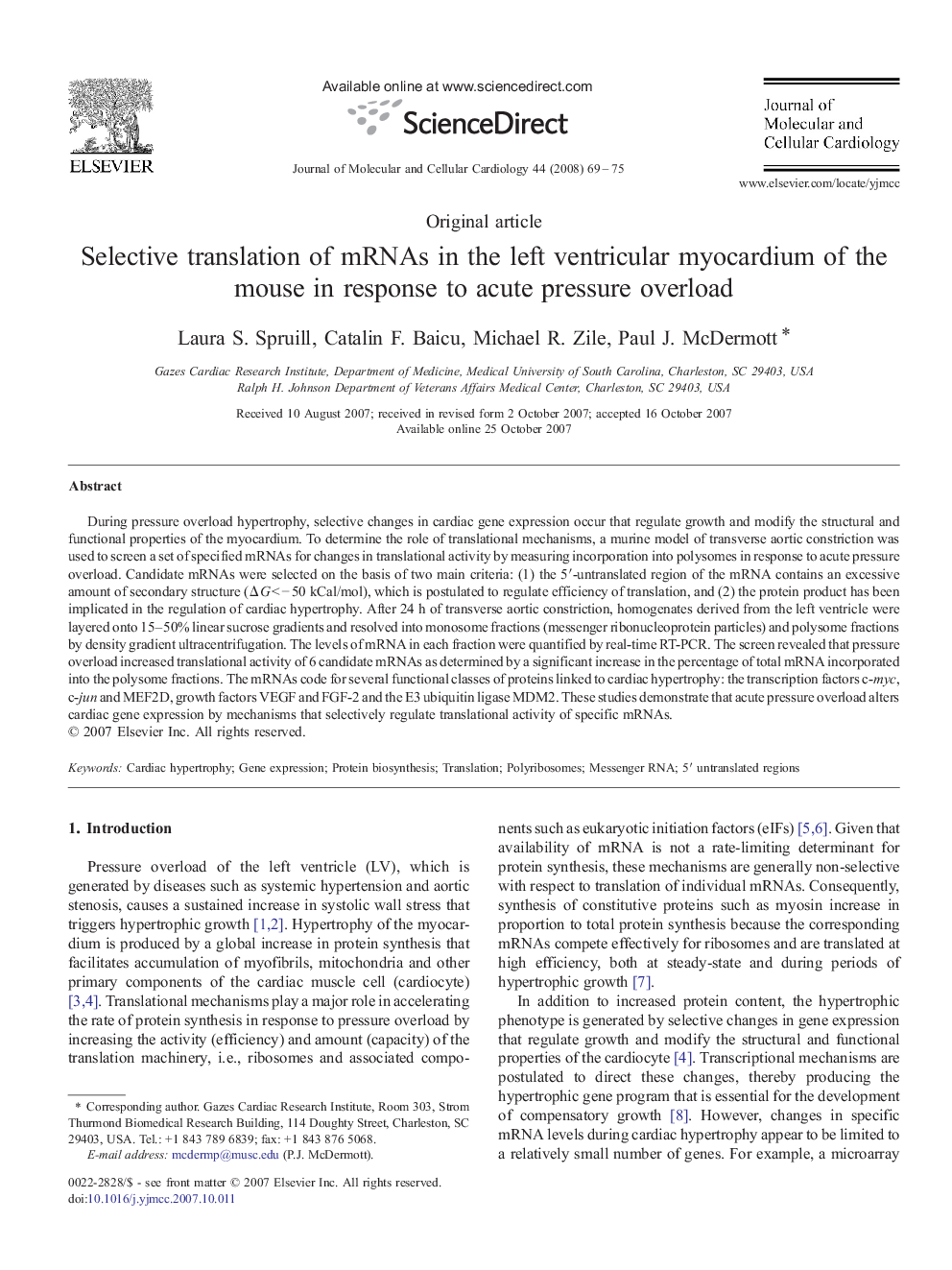| Article ID | Journal | Published Year | Pages | File Type |
|---|---|---|---|---|
| 2191565 | Journal of Molecular and Cellular Cardiology | 2008 | 7 Pages |
During pressure overload hypertrophy, selective changes in cardiac gene expression occur that regulate growth and modify the structural and functional properties of the myocardium. To determine the role of translational mechanisms, a murine model of transverse aortic constriction was used to screen a set of specified mRNAs for changes in translational activity by measuring incorporation into polysomes in response to acute pressure overload. Candidate mRNAs were selected on the basis of two main criteria: (1) the 5′-untranslated region of the mRNA contains an excessive amount of secondary structure (ΔG < − 50 kCal/mol), which is postulated to regulate efficiency of translation, and (2) the protein product has been implicated in the regulation of cardiac hypertrophy. After 24 h of transverse aortic constriction, homogenates derived from the left ventricle were layered onto 15–50% linear sucrose gradients and resolved into monosome fractions (messenger ribonucleoprotein particles) and polysome fractions by density gradient ultracentrifugation. The levels of mRNA in each fraction were quantified by real-time RT-PCR. The screen revealed that pressure overload increased translational activity of 6 candidate mRNAs as determined by a significant increase in the percentage of total mRNA incorporated into the polysome fractions. The mRNAs code for several functional classes of proteins linked to cardiac hypertrophy: the transcription factors c-myc, c-jun and MEF2D, growth factors VEGF and FGF-2 and the E3 ubiquitin ligase MDM2. These studies demonstrate that acute pressure overload alters cardiac gene expression by mechanisms that selectively regulate translational activity of specific mRNAs.
